
The author, on a bridge, on the Munda Biddi Trail. All photos in this post are by Fiona Taylor or Emma Best. If you would like more wildflower photos (thousands of ‘em), you should contact Fiona.
Western Australia’s Munda Biddi Trail is Australia’s most amazing long-distance off-road tour.
It covers just over 1000km of riding with a surprising amount of purpose-built single track, from Mundaring near Perth, to Albany, the largest city in southern WA.
Two aspects of the Munda Biddi Trail make it an experience which sets it apart from all other long-distance bike routes in Australia.
First, trail marking. At every trail intersection for the entire length of the trail, there are Munda Biddi trail markers showing the rider which way to go. I have no idea how many markers there are. Some of them have faded over years in the sun, but it is easy enough to decipher their intent. Some of the markers are brand new, and use a slightly different colour scheme. But all of them have the same Munda Biddi logo, and are a combination of yellow and blue.
What consistent trail marking allows is a way of always knowing that you are on the right trail. Ride more than a couple of kays without seeing a marker? Then it’s time to retrace your steps and see where you went wrong. The only exception is when the trail follows a gravel road without major intersections. Occasionally there can be up to 5 km between markers, but that is rare.
Since my last visit to the Munda Biddi 10 years ago, the way-finding has further improved with the introduction of a smartphone app for the trail. This is brilliantly designed so that it does not rely on having network coverage. The app uses your phone’s GPS to locate you on an already downloaded map, and can always tell you the distance to your planned destination, whether hut or town. The app is great for peace of mind, as you can always get a reality check of what the rest of your ride for the day will hold. It even has elevation profiles, so you are prepared for the hills which are always coming up.
The second aspect of the Munda Biddi Trail which makes it stand apart is the huts. On our recent Munda Biddi ride my group stayed in eight huts (Wungong, Dandalup, Bidjar Ngoulin, Yarri, Karta Burnu, Yirra Kartta, Booner Mundak and Jinung Beigabup, and had lunch breaks in three more (Carinyah, Nglang Boodja and Nala Mia).
Our north-south adventure comprised 16 riding days and two rest days.
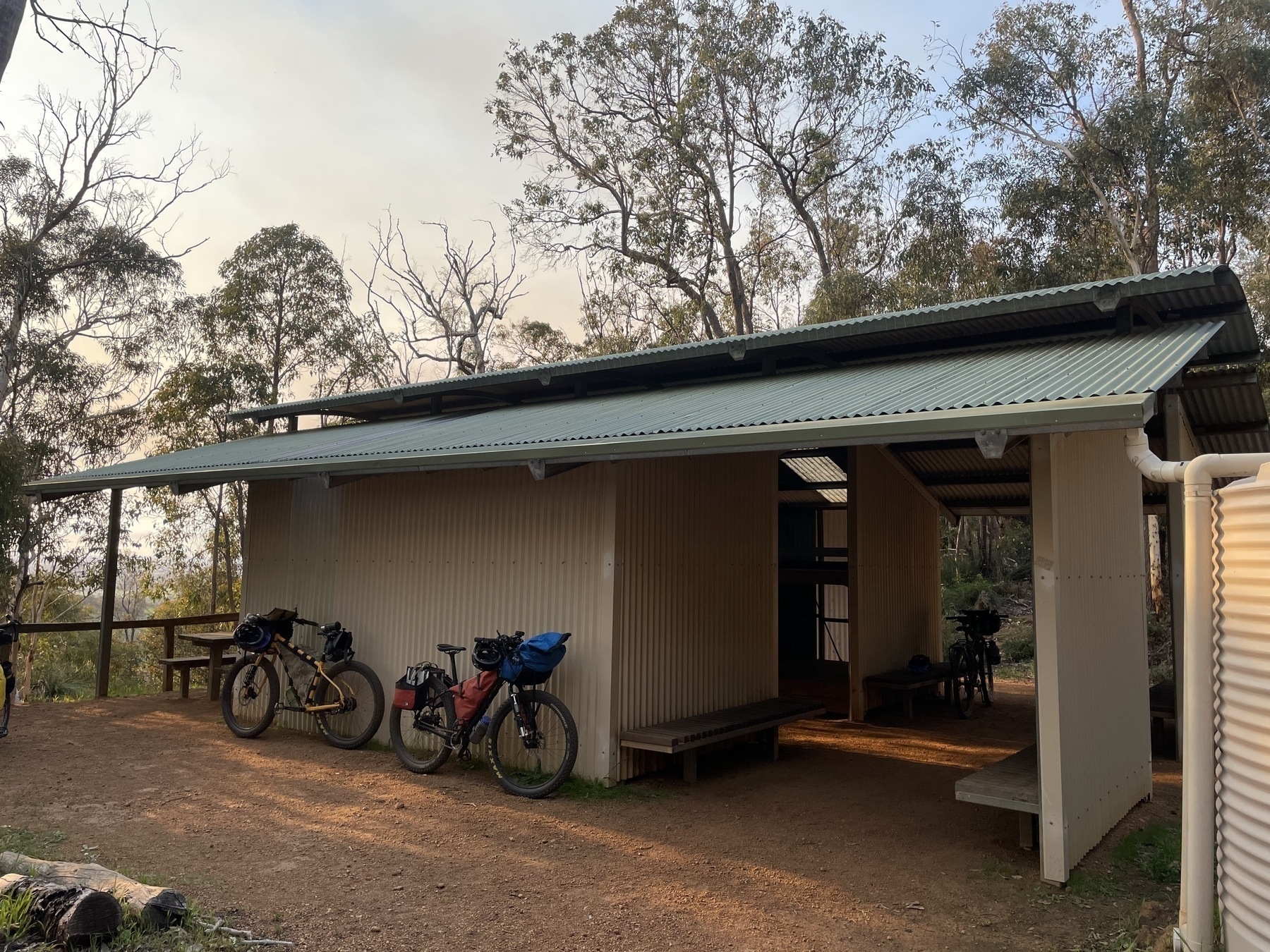

Every hut has water tanks with usable water (after treatment). So this means that it is rare to go more than 40km on the trail without the chance to refill your bottles. I carried more than 3L of water at the start of most days (two 1.5 litre bottles, one on each fork blade, and one standard 750mL bidon in a pouch on the handlebars), but usually topped off my bottles at lunchtime so there was never any reason to ration my water intake as we rode. This is an under-appreciated benefit, always having access to water.
The huts also provide shelter (of course) and a toilet. There are two sizes of hut. The large ones are claimed to sleep 24, and the smaller ones could sleep 12. In either case if the huts were full that would mean A LOT of snoring, and also you would be sleeping closer to stinky strangers than most folks would be comfortable with.
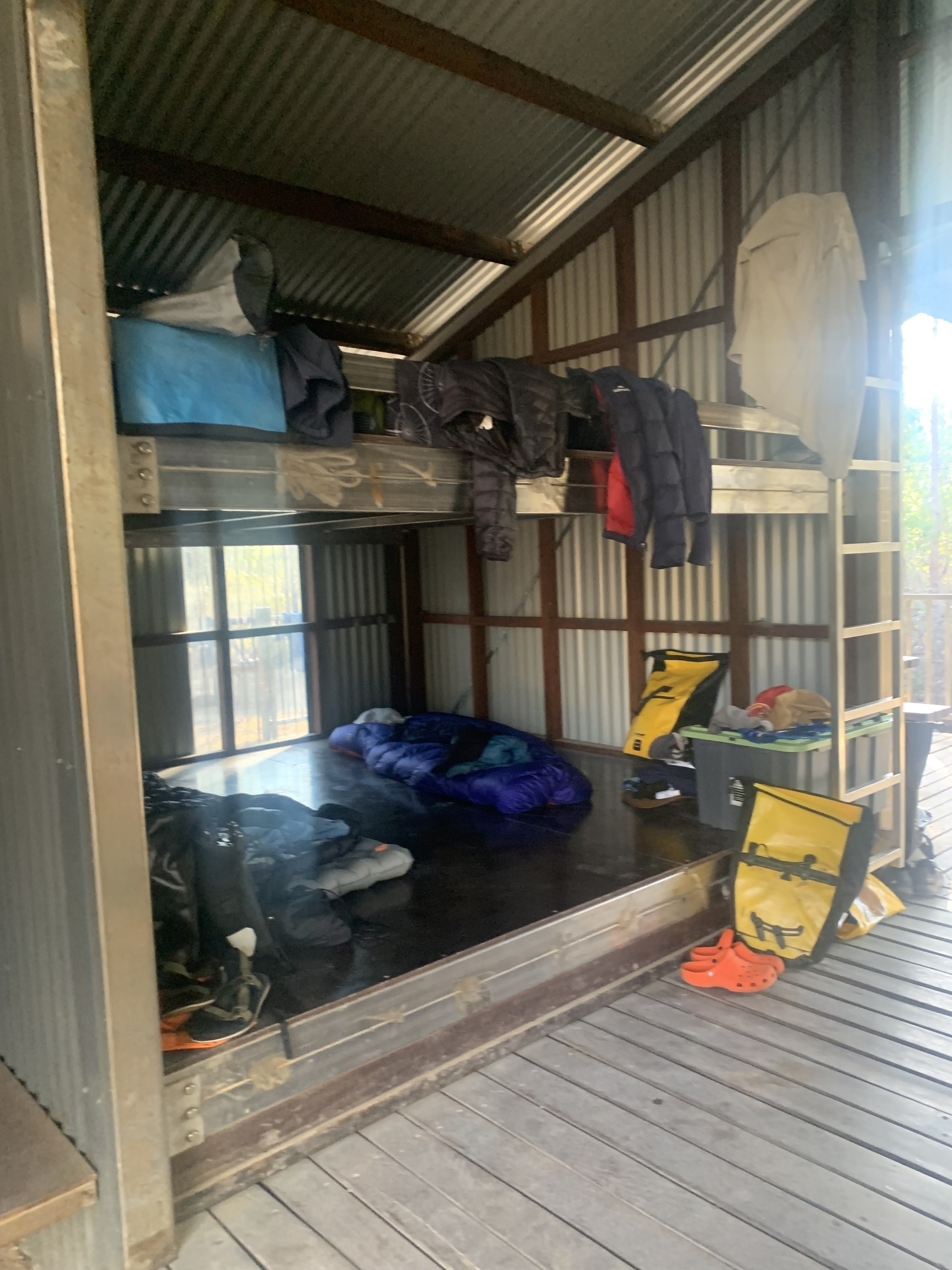
When I rode the northern half of the MBT in 2014 I mostly had the huts to myself when I was more than two days away from Perth. Ten years later, at a rough guess, the number of riders attempting the Munda Biddi has maybe quadrupled? Especially in the first half of our ride, we saw multiple other groups each day. At Yarri hut we shared with a group which arrived well after dark!
At Yirra Kartta hut there were so many folks that one couple decided to be in their tent rather than in the hut. That night the hut played host to eight people … our group of four, and two other groups of two.
It’s an conundrum. There is plenty of room on the trail for more riders, but the capacity of the huts are a built-in limiter on the number of people who can do an end-to-end at any one time. We often rode for half a day or more without seeing any other riders on the trail, but if the small huts mid-journey all end up full throughout September and October, then planning a ride will become much more complicated.

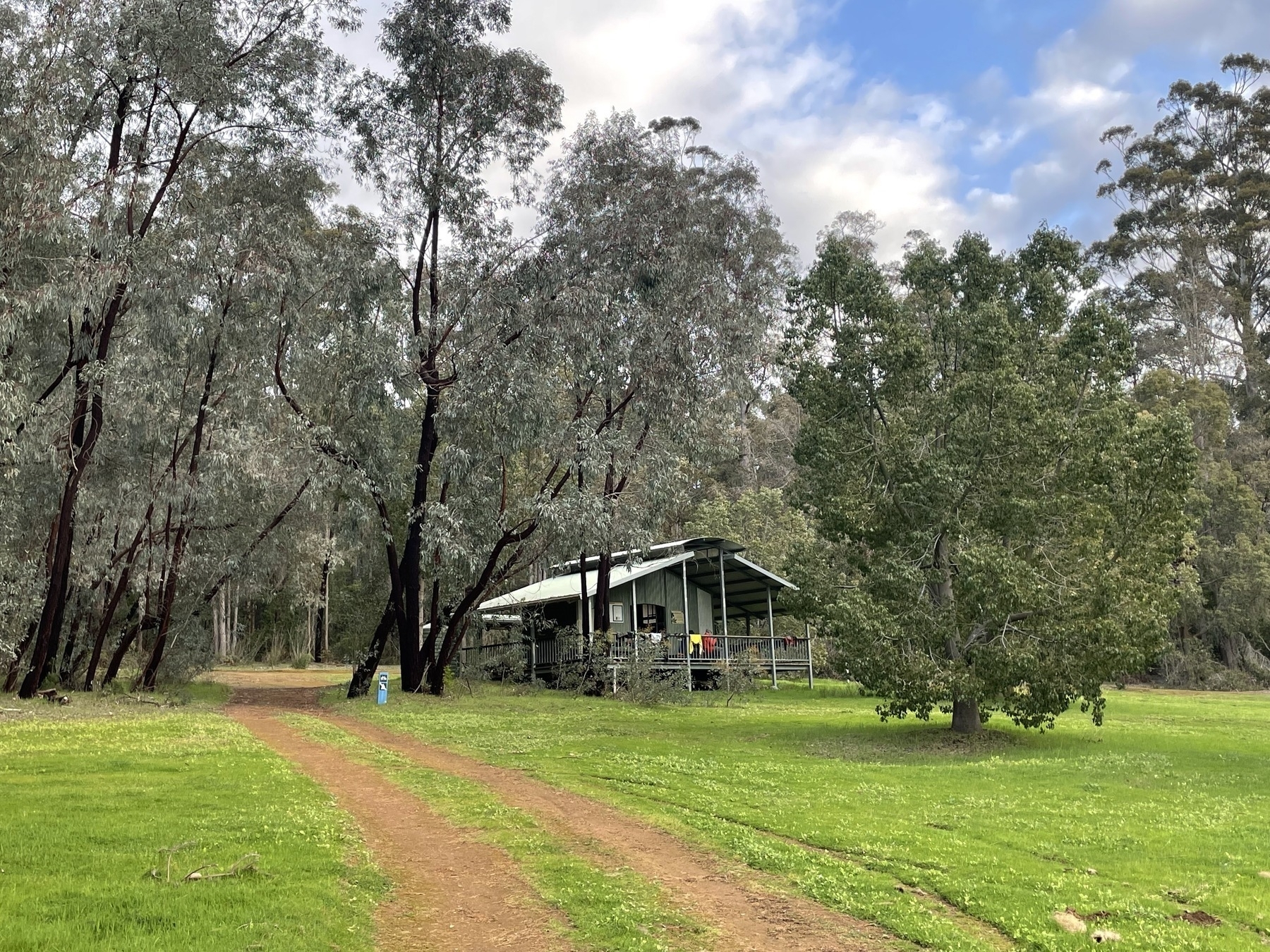
Of course, I might be worrying about something that will never happen. As we progressed on our journey, we had fewer friends sharing the last few huts with us. Yirra Kartta, which is just after halfway, was the last hut we made new friends in.
I’ve been dwelling on the huts a little too long. The trail, and in particular the scenery viewable from the trail, were the stars of the journey. Let’s be clear, most of that scenery is Western Australian bush. The northern half of the MBT travels through regrowth eucalyptus forest. The trail in that section is a mix of gravel forestry road and trail built especially for the MBT.
It’s not really until after halfway through the ride that larger jarrah, marri and karri trees really make their presence felt. As we rode from Quinninup to Pemberton past giant silver karris, the trail became magical. Until then it was challenging, uplifting, satisfying, and so so so full of wildflowers. But the next level came as we rode past the Gloucester tree as we departed Pemberton, and then descended past thousands of magnificent gum trees on glorious switch-backing singletrack for three kilometres.
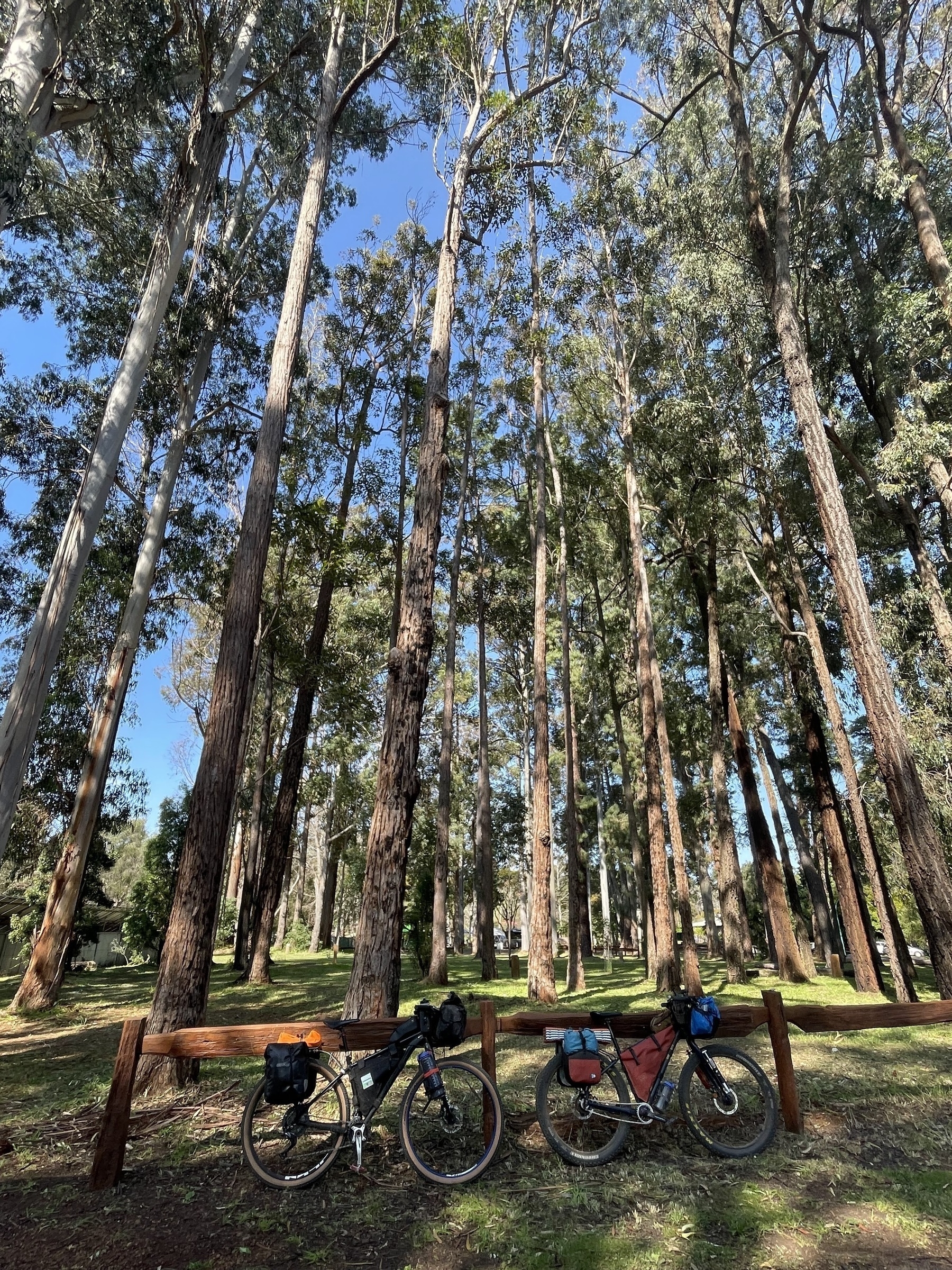
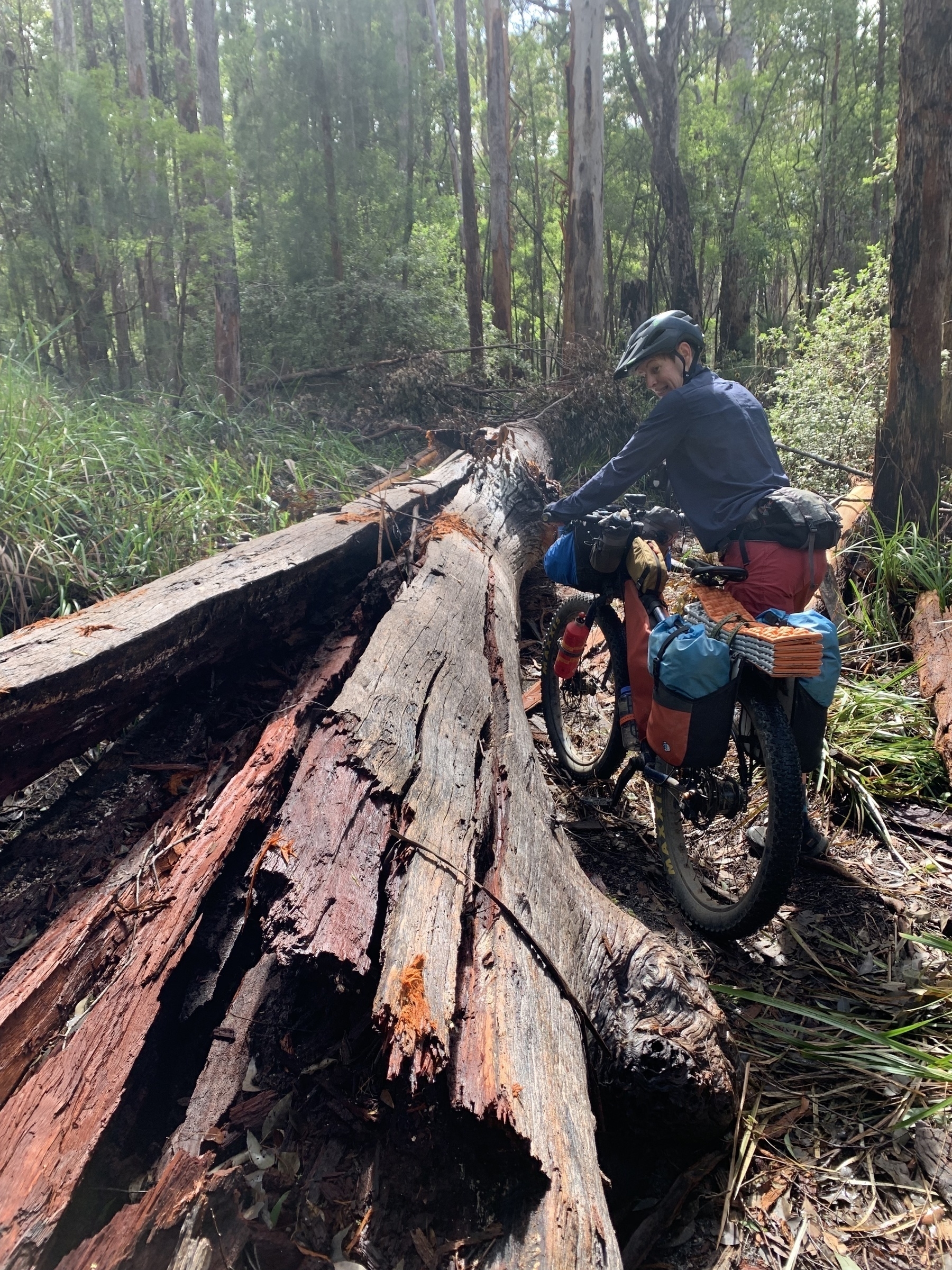
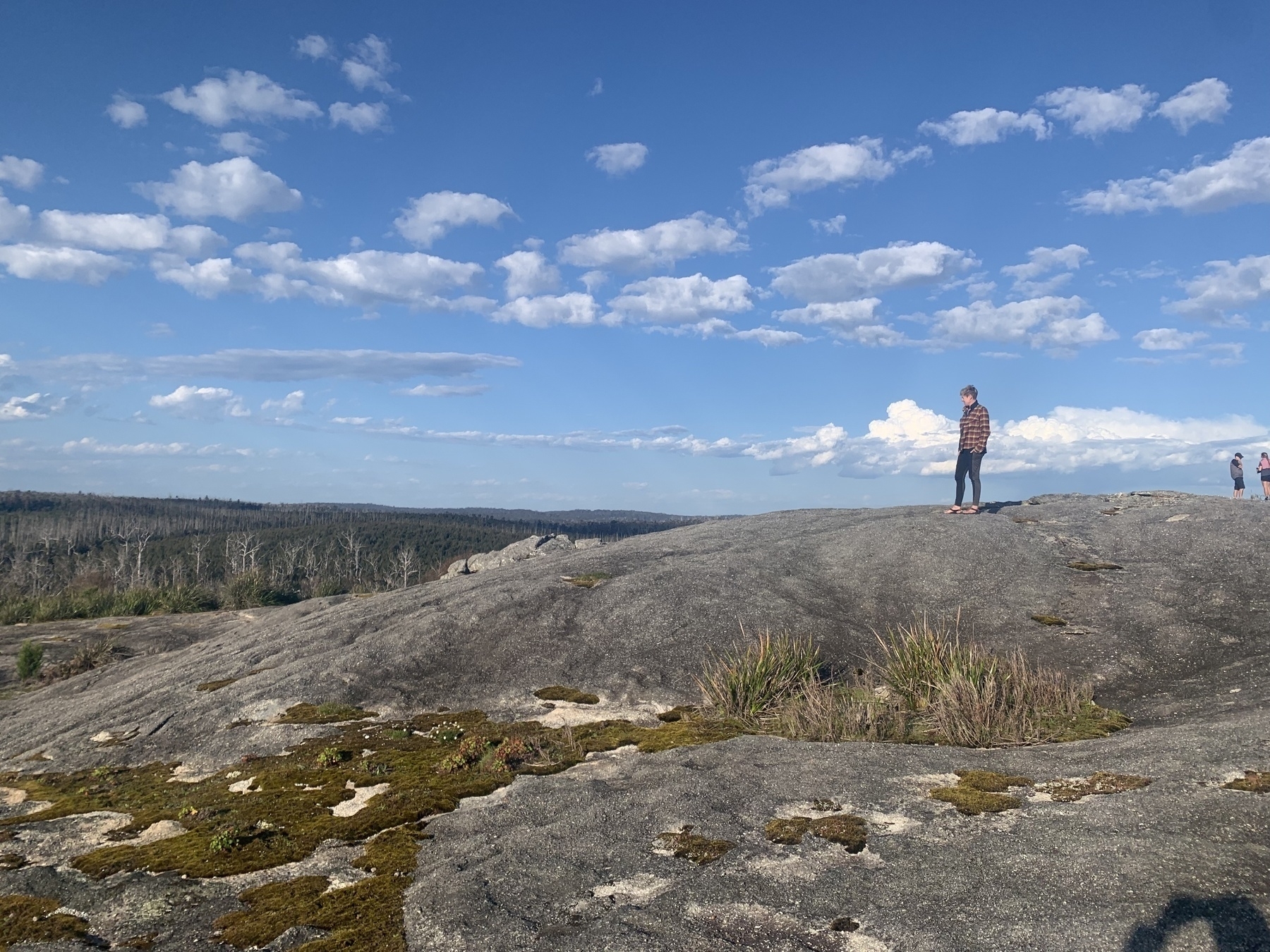

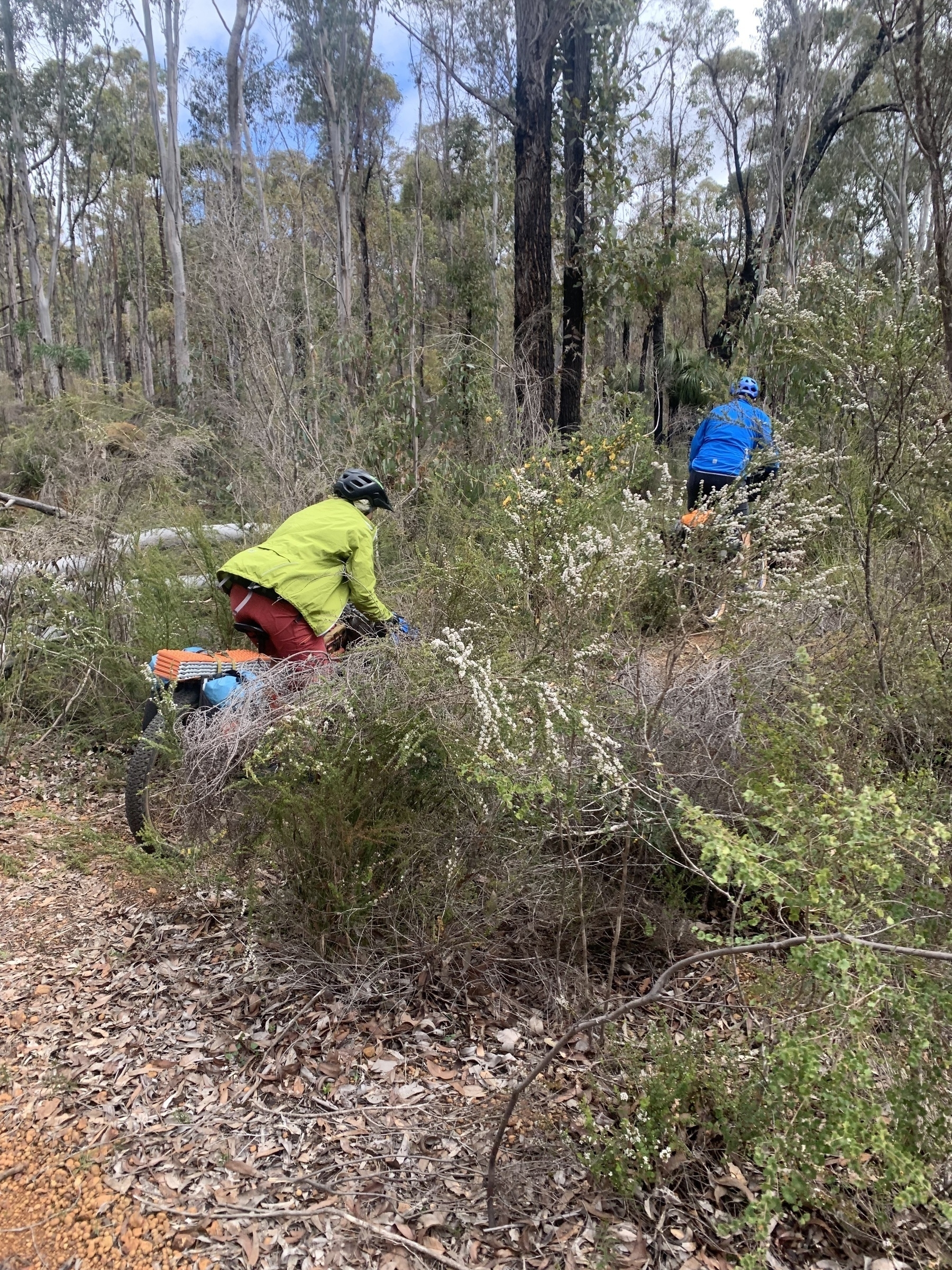
I’ve said many times to friends and family that what I like about bike touring is how simple it is. You get up in the morning, and the only thing you have to do is go for a bike ride. I already like going for a bike ride. So how good is life at that point? Sure, the ride might be hard or long or steep or rough. Sure, you might have an extra 10-15kg of gear and food and water weighing down your bike. But you’re riding your bike, life’s not too bad.
This is a gross simplification, of course. My mind isn’t quieted to zen contemplation just by riding my bike. There’s always some minor cause of stress, there’s always something slightly bugging you. A intermittent squeak that might be coming from your jockey wheels or your quick-release skewers or your free hub. Flies. Branches protruding into the trail. Flies. A breeze which brings the threat of rain. Heat. Cold. Flies.
The towns along the trail also have their charms. A surprisingly top-notch cafe in Pemberton. A stunningly lovely park in Nannup. A bike shop in Collie where the staff tut-tutted over the state of my bike’s drivetrain and still fixed the shifting for the rest of the ride. A workers’ club in Northcliffe where the welcoming atmosphere and hearty meals redeemed the disappointment of the rest of the town. A Filipino-influenced restaurant in Walpole. The run-down charm of the Donnybrook backpackers. The hospitality of Dale who runs the tavern in Quinninup and also lets out space in her own home to Munda Biddi riders. The busy buzz of Dwellingup on a school holiday weekend. Emus and kangaroos dominating the “main street” of Donnelly River Village.


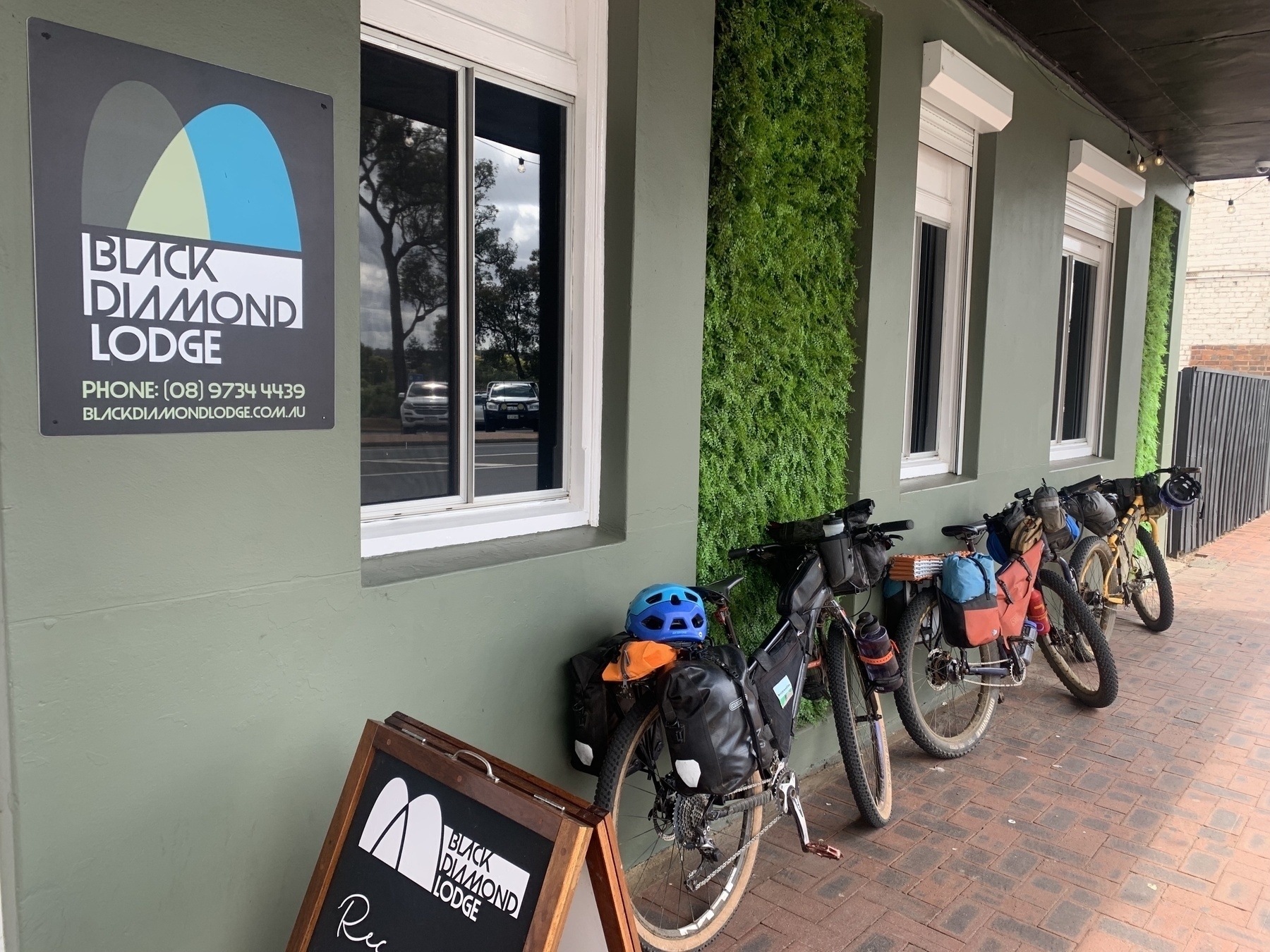


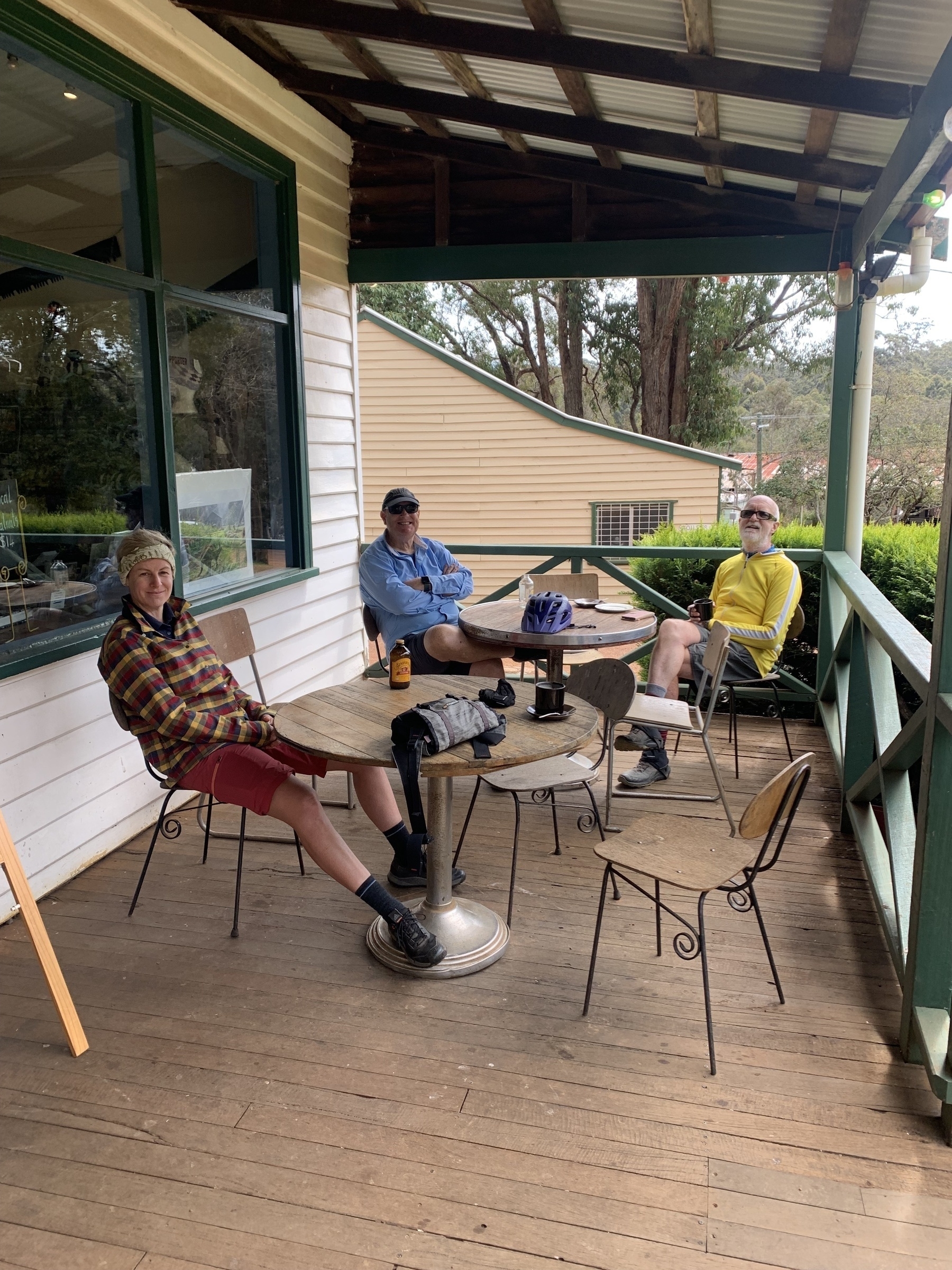
I rode with three friends: Emma, Fiona and Ian. We had a lovely time and deepened our friendships. And even better (from my perspective at least) my better half Annette joined us at Walpole a few days from the end (as a supporter, not a rider).
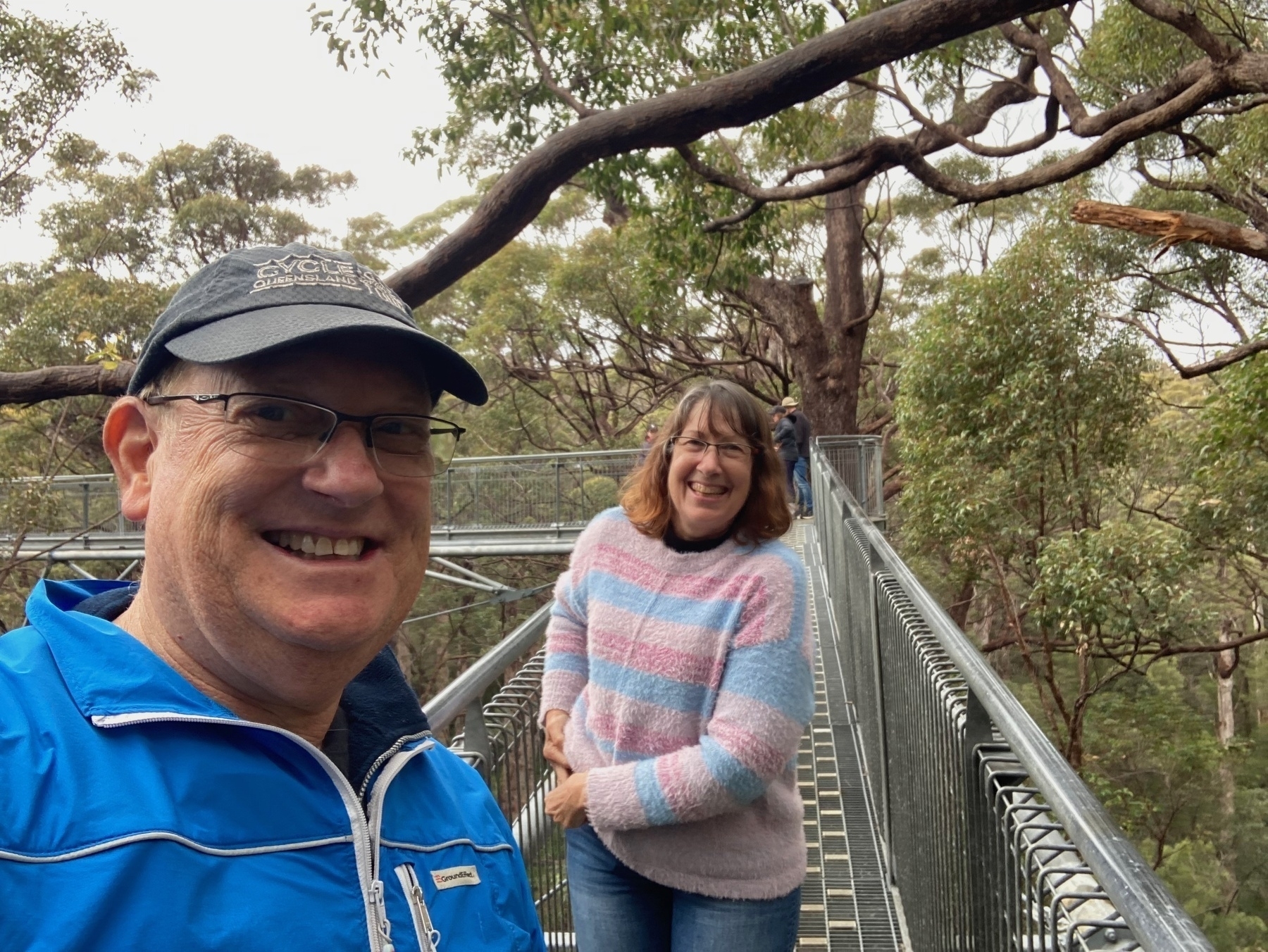
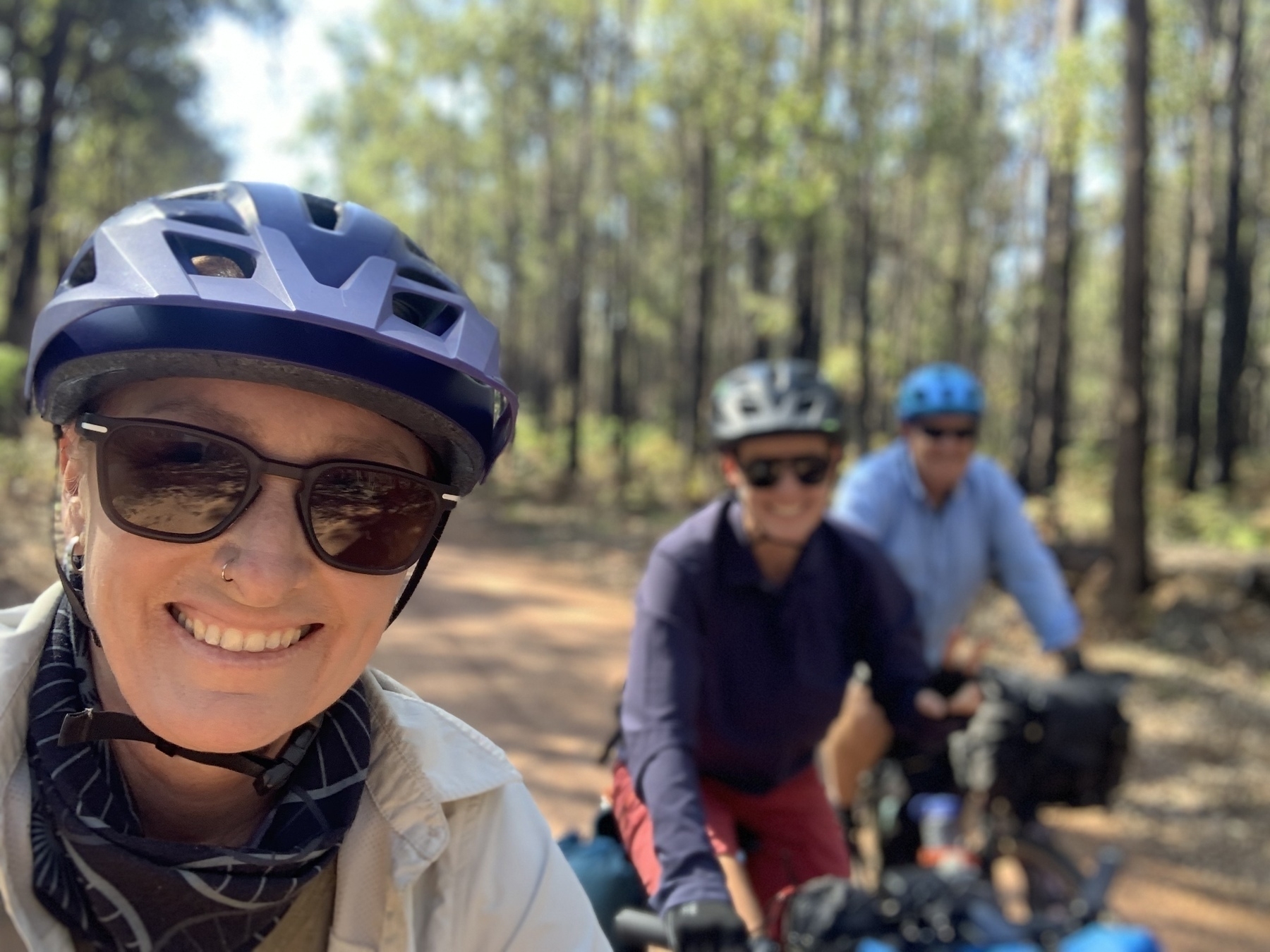
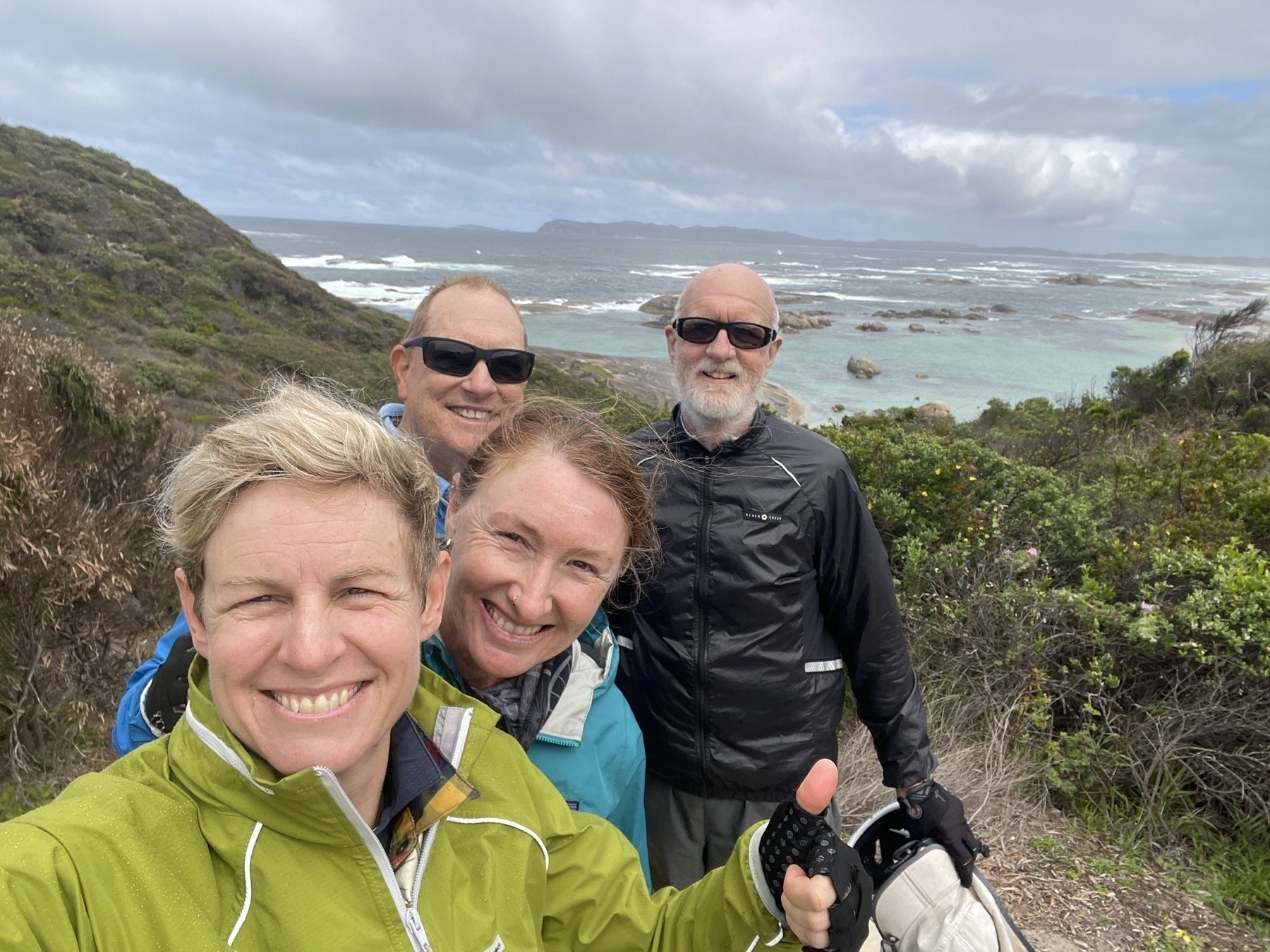

The Munda Biddi Trail is a fantastic experience, and if you are a person who likes riding a bike, I recommend it to you. You don’t need to be a super skilful mountain biker (although competent bike handling would be advantageous). You don’t need to be super fit … I get dropped by the bunch every Tuesday going up Cemetery Hill, but I can ride all day at a steady pace, and so can you.
Let me know if you need some encouragement or advice about the right sort of mountain bike for this ride. Always happy to chat about what the kids these days call “bikepacking”. I’ll see you at the next Coffee Outside.